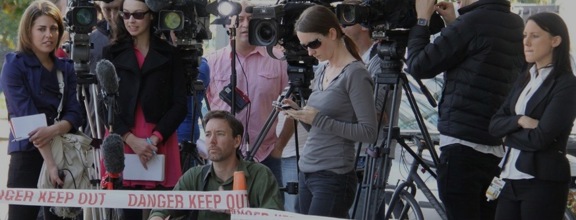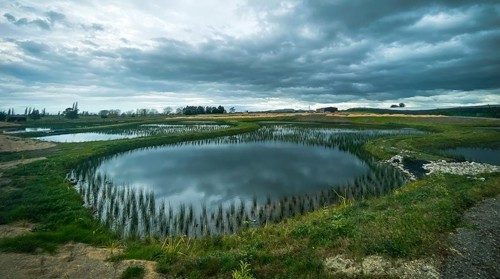

Waihi Estuary health under the microscope
Monitoring is now underway in a joint wetland project between Bay of Plenty Regional Council, kiwifruit orchard management company Baygold, and the National Institute of Water and Atmospheric Research (NIWA) to help restore the Waihī Estuary to a healthy state.
In recent decades the estuary water quality has degraded as increasing amounts of nutrients, sediment, and faecal matter (E. coli) have been washed into the estuary from surrounding land and contributing waterways.
Regional Council scientists estimate that the current quantity of nutrients and bacteria entering the estuary will need to reduce by 30–66 percent to stop the decline in estuary health.
Regional Council Land Management Officer Claire McCorkindale says land drainage, development, and land-use intensification since the early 1900s have all contributed to its current state.
She says drastic action to improve the land management practices is required.
“These manmade wetlands will be monitored by NIWA for the next two years to determine if the contaminant reductions that they’ve predicted as part of their constructed wetland guidelines will be achieved in the field,” McCorkindale says.
Baygold Design and Environmental co-ordinator Olivia Manusauloa says the wetland treatment will help understand what is in the water and what needs to be done to improve the water quality.
“Water quality is important to us because we care about the environment and how we interact with that environment. It is a key priority for us within that system,” Manusauloa says.
The wetland is one of six that NIWA is working on with regional councils around the country, to monitor as part of its MPI-funded research.
NIWA Principal Scientist Chris Tanner says the Bay of Plenty constructed wetlands, when added to the other five across the country NIWA is monitoring, will fill critical gaps in their understanding of wetland effectiveness for managing farm contaminant losses.
“These wetlands will enable farmers, industry, and council to see what’s really involved with constructing them and what water quality, biodiversity and aesthetic benefits they provide. In the end seeing is often believing,” Tanner says.
ENDS
Find out more about what is being done to improve the water quality entering the Waihī Estuary.
Claire McCorkindale, Bay of Plenty Regional Council and Olivia Manusauloa, Baygold explain the importance of the new wetland.

Newly constructed wetland on Baygold land at Paengaroa.
For further media information, please contact media@boprc.govt.nz
